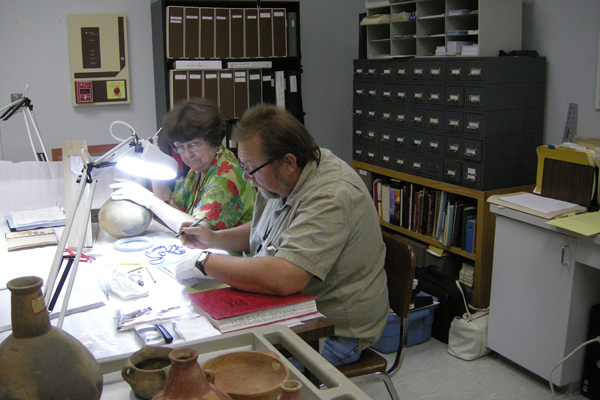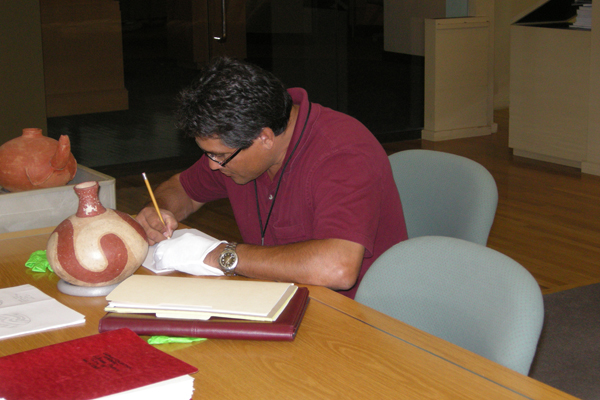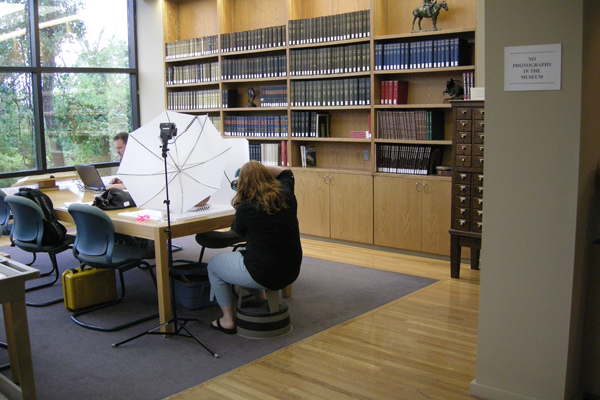Documentation of Carden Bottoms Artifacts
at the Gilcrease Museum Tulsa, Oklahoma The Gilcrease Museum in Tulsa, Oklahoma has a large collection of ceramic vessels and other artifacts from our Carden Bottoms study area, collected between 1930 – 1950 by Arkansas judge Harry J. Lemley and acquired by the Gilcrease after his death in 1965. Members of our project team, including Robert Cast and Bobby Gonzalez of the Caddo Nation, began inventorying this material in August, 2010. We made several additional trips to the Gilcrease during the fall of 2010 and spring of 2011, and more visits are planned. We are following the same procedures at the Gilcrease that we employed to document artifact collections at the National Museum of the American Indian curation facility in Suitland, Maryland. Eric Singleton, collections manager at the Gilcrease, is providing indispensable support for our efforts. The Gilcrease Museum collection of materials from our study area includes a significant assemblage of whole ceramic vessels. Robert Cast, Bobbly Gonzalez, Ann Early, George Sabo, Leslie Walker, and Rebecca Wiewel are working on these materials, and to date we have documented and photographed 310 vessels. Among other observations, we note that the Gilcrease collection includes a larger proportion of exquisitely decorated fine wares in comparison to the University of Arkansas Museum collection. As with the University of Arkansas collection, the vessels in the Gilcrease collection represent local manufactures along with specimens made in the Central Mississippi Valley and in regions of southwest Arkansas inhabited by the ancestors of modern Caddo Indians. We also identified examples of "hybrid" vessels made in the Carden Bottoms locality that incorporate design elements at home in the adjacent areas. Jared Pebworth is concentrating on documenting the many hundreds of other Carden Bottoms artifacts, which include chipped and ground stone tools and ornaments, shell ornaments, stone and ceramic pipes, and European trade goods. So far Jared has documented more than a thousand of those items.
The Gilcrease collections represent a highly significant body of material that will tell us much about art, ritual, and social interaction among Carden Bottoms phase communities. We are grateful for the opportunity to study this interesting and important material. |
||||||||
 |

|



